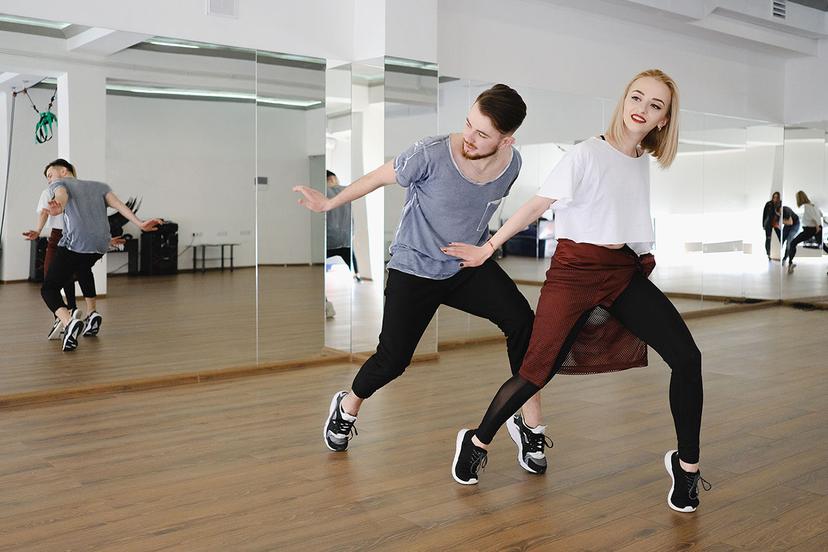Dance

Structure
There are relatively few sectors within the dance industry. In general, it can be divided into two main categories: professional and amateur. The professional dance industry is the traditional one in which workers are employed by dance companies to perform during a season that is typically about nine months in length. Other employees in the professional dance industry are choreographers, rehearsal or master dancers, administrators and recruiters, lighting and set designers and operators, makeup artists, and publicists. Approximately 21,200 dancers and choreographers were employed as of 2018.
In the amateur dance sector, most workers are owners or instructors at dance schools. The schools may be public schools or universities, but most are private companies. These schools teach children and adults different dances and for varying reasons. Some schools teach children ballet, tap, jazz, or contemporary dance for fun or for competitions. Other schools focus on adults and teach ballroom dances like the foxtrot. These schools can also help students who are interested in competing in amateur competitions, and professional dance instructors at these dance studios often competed as amateurs or professionals. Adults take classes for fun or to improve their skills for a specific event.
There is some overlap between these two categories. For example, some professional dance companies also offer schools or classes to children. Some schools have professional dance companies for their students to perform in. Also, many professional dancers go on to open their own dance schools. This amateur division allows employees the opportunity to become business owners. They can be independent, or buy into a franchise like Arthur Murray or Fred Astaire dance studios.
Non-management employees in the dance industry can become members of a union to protect their interests and ensure they receive fair and standard pay and benefits. The union for performers is the American Guild for Musical Artists, based in New York City. Other employees, for example set decorators, can join unions specifically for them.
Typically, dance productions have several nighttime performances a week, with one or two matinee performances. Some performances may be held only once or twice. Rehearsals are often during the day.
A career in dance, like most other arts, requires a passion for dance itself. Most people start taking classes at a very early age and continue into adulthood and throughout their careers. Dancers usually are hired through an audition, either for a one-time production or to be part of an ongoing company. Some companies have apprentice or trainee programs, which allow dancers to work their way into the full company. Most choreographers start out as dancers, as do company artistic directors.
Because there are relatively few dance companies that contract dancers or choreographers all year, professional dancers often must supplement their income with work in other professions. For example, dancing talent is used at and by summer resorts, on cruise ships, in gambling casinos, at state fairs, and at amusement and theme parks.
Those who work in the amateur sector teaching dance also follow a seasonal schedule and often work evenings, as parents are unable to bring their children to classes during the day. Only adult dance studios offer classes all year round. But they also often work more frequently during the evening and on weekends when adults are available for classes.
Other Jobs in the Industry
As with other performing arts, the staff involved in executing a dance performance extends far beyond the talent that appears on the stage, and includes choreographers, costume designers, and lighting technicians.
Choreographers create original dances and teach them to dancers and other performers. They often direct the presentations of their work. Ballet masters or rehearsal directors assist in teaching a dance to a group of dancers. Usually the ballet master or rehearsal director has learned the dance directly from the original choreographer or has actually performed the dance. At times, when the dance is a preexisting work being introduced to a new company, it is taught to the company's ballet master, who then takes charge of teaching and rehearsing the dance in the choreographer's absence.
Although dance usually does not involve such elaborate or realistic sets as one sees in theater, there usually is some scenic design, sometimes in the form of a backdrop or other simply scenic pieces. A set or scenic designer decides what elements will be used and how to enhance the presentation. Scenery behind the performers sets the mood and the location. Lighting sets mood and highlights movements and performers at key points in the presentation. The lighting designer draws up plans for how each part of the performance will be lit.
Stage crew members help build the sets. They also operate lighting and sound equipment during a performance. Lighting technicians design, set up, and execute the performance's lighting. Manipulating the equipment, establishing the timing, and creating special effects are part of the lighting job. Directing the amplification and recording of stage sounds is done by sound technicians.
Makeup artists apply makeup and other material to dancers. Costume directors select and help create the costumes for dance performances and oversee the production of the costumes by designers and seamstresses. Costume directors work closely with the choreographer and must be able to design costumes that don't interfere with dance movements. Road production managers oversee and coordinate the business and operational aspects of a dance company while it is on tour.
